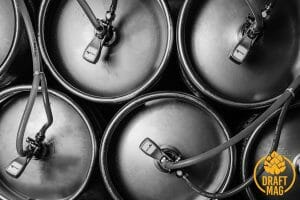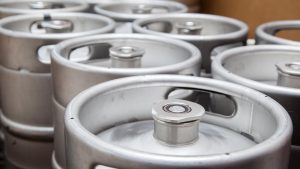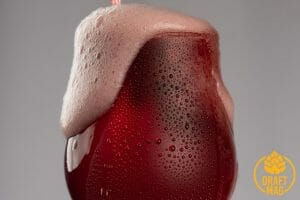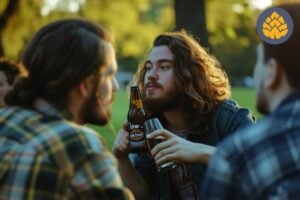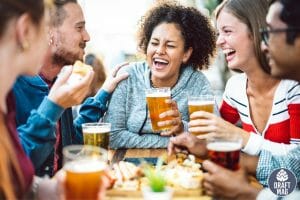Non Carbonated Beer
Non carbonated beer has become very popular among craft beer drinkers and enthusiasts. Although beer is well-known for its fizziness, some brews don’t have this distinct carbonation.

Just because beer doesn’t have carbonation doesn’t mean it’s not beer or make it any less delicious.
Our guide will cover all you need to know about non-carbonated brews and answer some popular questions you might have.
What Is Non Carbonated Beer
A non-carbonated beer is any brew with little to no carbon dioxide, or CO2, which leads to no carbonation levels in the beverage. Usually, beers are carbonated, which means they contain volumes of (CO2), making them very fizzy.
Although it seems like having no carbonation in your beer might seem unappealing, there is still a base level of naturally produced carbonation that occurs through the process of fermentation. This in turn produces a softer and less abrasive mouth feel creating a more pleasant drinking experience.
Measuring Carbonation in Beer
You can measure the level of carbonation in beer by using an instrument common in a brewhouse called a Zahm. A zahm measures the amount of pressure on your brite tank in combination with the temperature and gives you an accurate CO2 reading. In a homebrew situation, you can implement the “set it and forget it method” where you set your kegerator to a desired temp that matches the force pressure on your CO2 regulator that you are trying to carbonate to. You set your regulator then forget it for 5-10 days.
Budweiser beers usually have about 2.71 volumes of CO2 in most of their beers, which is high, but beers with 2.48 volumes of CO2 are on the lower side.
What Are the Different Types of Low CO2 Beer
The two types of non-carbonated brews are nitro beer and cask-conditioned beer. These types cover reducing carbonation in beer after it is brewed. Whenever you make beer traditionally, there’s no way you won’t get some carbonation.
CO2 is a byproduct of fermentation, which is necessary for any brewing process. However, you can lower the CO2 levels using these two ways.
Nitro Beer
Nitro beer is any beer with more nitrogen than CO2, making it have way lower carbonation than normal beers. The ratio between nitrogen and CO2 is 70 to 30 in a nitro beer, and they are usually smoother and silkier, with a fluffier head than normal beer.
In nitro beer, nitrogen is used in the carbonation process rather than CO2. It forms smaller, more profuse bubbles, leading to a different flavor and unique color. This doesn’t mean that nitro beer has no carbonation, but you can barely notice it.
Cask Conditioned Beer
Another type of non-carbonated brew is cask-conditioned beer, which is brewed in and served from a cask. Cask-conditioned beers are pretty popular because of their unfiltered, unpasteurized and creamy character.
Cask ales contain CO2 but its produced naturally during fermentation. Yeast consume sugar during the fermentation process and put off alcohol and CO2 as a byproduct. This difference between naturally produced CO2 and force carbonating your beer is night and day.
Force carbonating beer using a CO2 canister is pretty common but you produce larger bubbles and generally its a more sharper mouth feel. Naturally produced CO2 from force carbonation produced finer, smaller and tighter bubbles that give a cloud like effect in your mouth. Plus, the taste of cask ales is a bit different from other non-carbonated brews, giving you a unique flavor profile.
Sugar and hops are also added to the cask and it is conditioned. Take note that there is still a little carbonation obtained from the small amount of yeast carried over from primary fermentation. It can be conditioned for up to two weeks. “Keep in mind the more sugar you add after primary fermentation, the more volumes of CO2 you will produce in your cask ale. If you add too much sugar you can create a potential beer bomb and that’s never fun to clean” says George Bauman, Production Manager for Commonwealth Brewing.
Drinking Low CO2 Beer
Anyone can drink non-carbonated beer if they prefer this type of brew. Most people decide to drink this type of beer because they want to consume less carbonated beverages for health reasons. This way, they don’t have to give up their love for beer to reduce their CO2 intake.
Most people don’t believe that non-carbonated brews taste just like carbonated beers since they don’t have the usual fizz. But these beers are everywhere and taste just as great. If you want to give it a try, you can check out nitro beers, cask ales, highly alcoholic beer, or a Belgian lambic which still contain CO2 but generally the levels are a little lower and acquired through natural carbonation methods like spunding or fermenting under pressure.
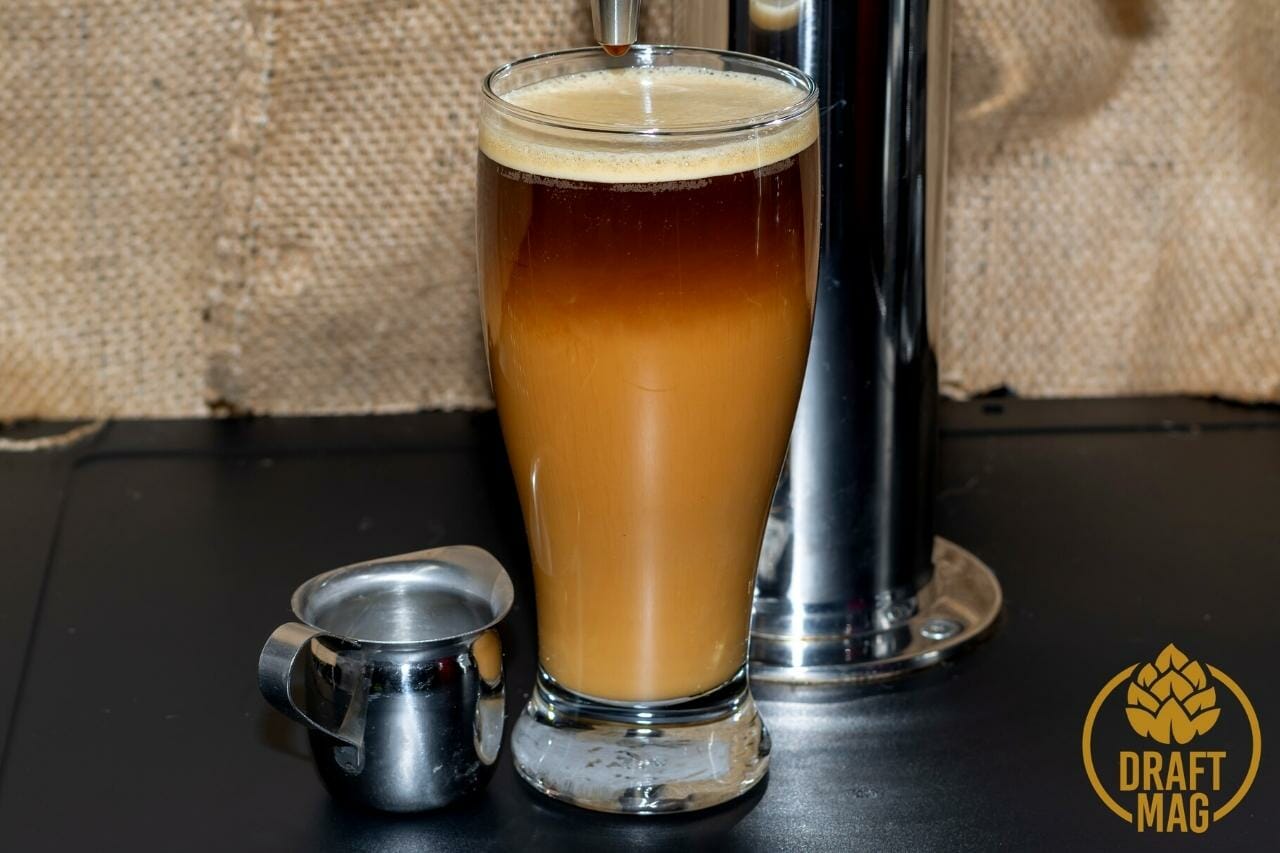
How Much Carbonation Do High ABV Beers Have
It’s important to note that beers with higher alcoholic content usually have lower carbonation levels. The reason why is because yeast gets stressed out in higher ABV ranges and it can inhibit the yeast performance.
You can still carbonate your higher ABV beer though if you desire by force carbonating in the keg using the “set it and forget it method” mentioned earlier or adding 30-40psi to the keg and gently rolling it on the floor back and forth for a while if you are in a homebrew situation.
Brands Have Light Beer with Low CO2
Trail Dubbel from Side Project Brewing and The Ives Blend 7 from Upright Brewing are some brands that produce low CO2 beers. Less popular and local brands usually have non-carbonated brews in their selection, as popular names like Coors, Budweiser, Corona Extra and Miller have the most carbonation in their beer.
It’s not very easy to find non-carbonated brews in the US because they are less popular and liked among enthusiasts. However, you can still find some American breweries in the beer industry that are experimenting with this style.
Examples of Uncarbonated Brews
An example is Side Project Brewing, based in Missouri, which has the popular Trail Dubbel, made Belgian style. The Ives Blend 7 from Upright Brewing in Oregon is also a popular choice.
In Colorado, you can check out Stillness by Atom Brewing of Erie. You can easily check your closest liquor store or brewpub for popular beers with no carbonation.
Carbonation Time in Beers
It takes about two to three weeks for carbonation to complete when making beer in a homebrew situation. Spunding can also take between 1-3 weeks to naturally carbonate your beer. In a professional brewing operation you can carbonate a beer in a few hours. But when making non-carbonated brews, it takes less time because you only have to remove the CO2 in the beer.
How to Remove Carbonation From Beer
If you brew your own beer, there are different tricks you can do in order to make it non-carbonated. But when you try to remove carbonation from beer, either by carbonating with nitrogen or putting it in a cask, you can drastically reduce the levels of unnaturally produced CO2 or force carbed beers. This will still be healthy for those who are avoiding carbonated drinks, but this doesn’t mean that your beer is completely free from CO2.
Trick 1
Take the beer from the can or bottle and pour it into a cup. Then, take another cup and pour the beer from one cup to another. Repeat this about seven times until it becomes less fizzy and less carbonated.
Trick 2
You can use a saucepan to reduce the carbonation in the beer. This involves pouring the beer into the pan and boiling it over high heat. Keep on boiling the beer until there is no carbonation left in the brew. Pour the beer into a mug and put it in the fridge to cool down. Heating beer though will evaporate off alcohol reducing the ABV in your finished beer so be careful not to produce a non alcoholic beer by warming up for too long.
Trick 3
Pour your beer in a large mug and stir it very strongly with a spoon in circular motions. Keep on stirring it for about five minutes until there is no longer any foam in the beer.
Trick 4
Remove the bottle cap of the beer, or pour the beer in a glass. Then, keep the beer in the fridge to keep it cool while it lets out the carbonation. After about two hours, you can now enjoy your non-carbonated brew.
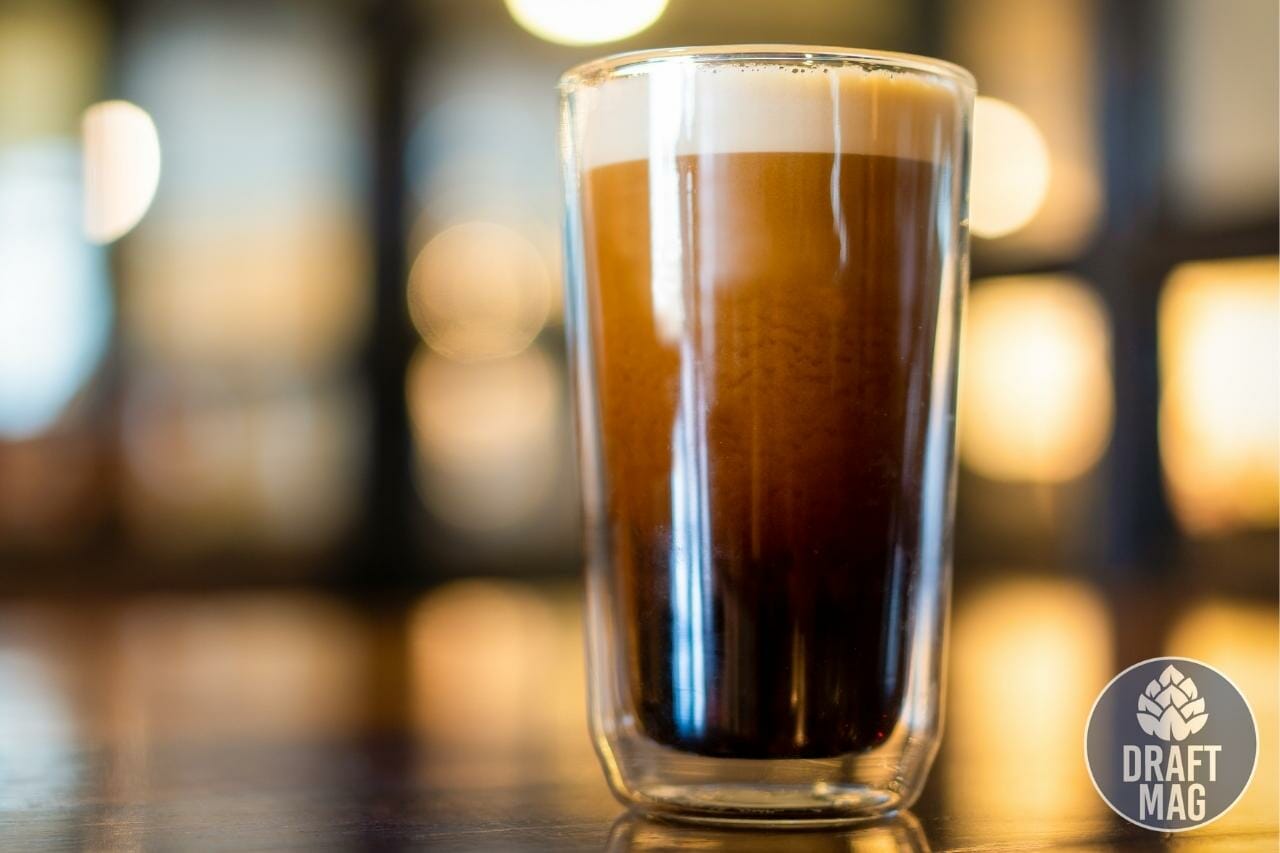
Beer Taste Like Without Carbonation
Beers without carbonation usually have a lighter and weaker taste than normal beers. They are also less bubbly and fizzy than other beers. Some drinkers would say that non-carbonated brews have a bitter and boring taste, but you simply have to try it out to know if it’s your style of beer or not.
Non carbonated beer also has less aroma than other beers. Carbonation creates those nice tight little bubbles that not only affect mouthfeel but also carry aroma compounds to your nose which is one of our most used senses other than our taste buds when drinking beer.
Carbonation can also mask bitterness in your finished beer as well. If you find a beer you made is just a little too bitter, try upping the volumes of CO2 in your finished beer and you’ll likely taste a drop off in bitterness.
Frequently Asked Questions
Here are the answers to some of your queries regarding non-carbonated beer.
Are All Beers Carbonated?
Yes, all beers are carbonated, as even non-carbonated brews still have a small amount of carbonation. When a brewer makes beer, carbonation can happen naturally or by force. This is generally done by sealing the beer a few points from terminal gravity and letting the yeast finish fermenting under pressure. The result is a natural carbonation without using external sources like CO2 canisters from a homebrew supply shop.
Can You Drink Beer Before Carbonation?
Yes, it is possible to drink beer before it is carbonated. Alcohol isn’t ruled by carbonation, so you can drink your beer even when it’s not carbonated. If you’re making your beer at home, you can enjoy drinking it before putting it through carbonation. If you want a non-carbonated brew, you can skip the carbonation process and use the tips explained above to remove any of the CO2.
What Is the Least Non Carbonated Beer?
The Hobgoblin beer is one beer with the least carbonation, set at 1.7 volumes of CO2 per pint of beer. Non-carbonated ales and stouts are more popular than other brew styles.
Beers like San Miguel and Peroni are also the least carbonated among other types, especially when it comes to lagers.
Which Beers Are Flat?
Flat beers are beers that are non-carbonated or otherwise conditioned, and Chicha beer from Latin America is a good example. These beers have the same amount of alcohol but with a lighter taste and little or no CO2. They usually have no or very little head. Flat beers are not very popular among enthusiasts because of their lighter taste.
Related Carbonated Beer Articles
Learn all bout Carbonated beers in the articles below.
Wrapping Up
If you’re interested in cutting down your carbonation intake levels, you can switch to delicious non-carbonated brews or make yours in this style while homebrewing.
- Non-carbonated brews are beers with little to no levels of carbon dioxide, or CO2.
- Nitro beer and cask-conditioned beer are the two types of low CO2 beer.
- Anyone can drink non-carbonated brews.
- You can remove the carbonation from your beer using different methods.
- Carbonation isn’t what makes a beer, beer, but it is an important contributor.
With our complete guide, you can check out non-carbonated brews the next time you want to try something new.




